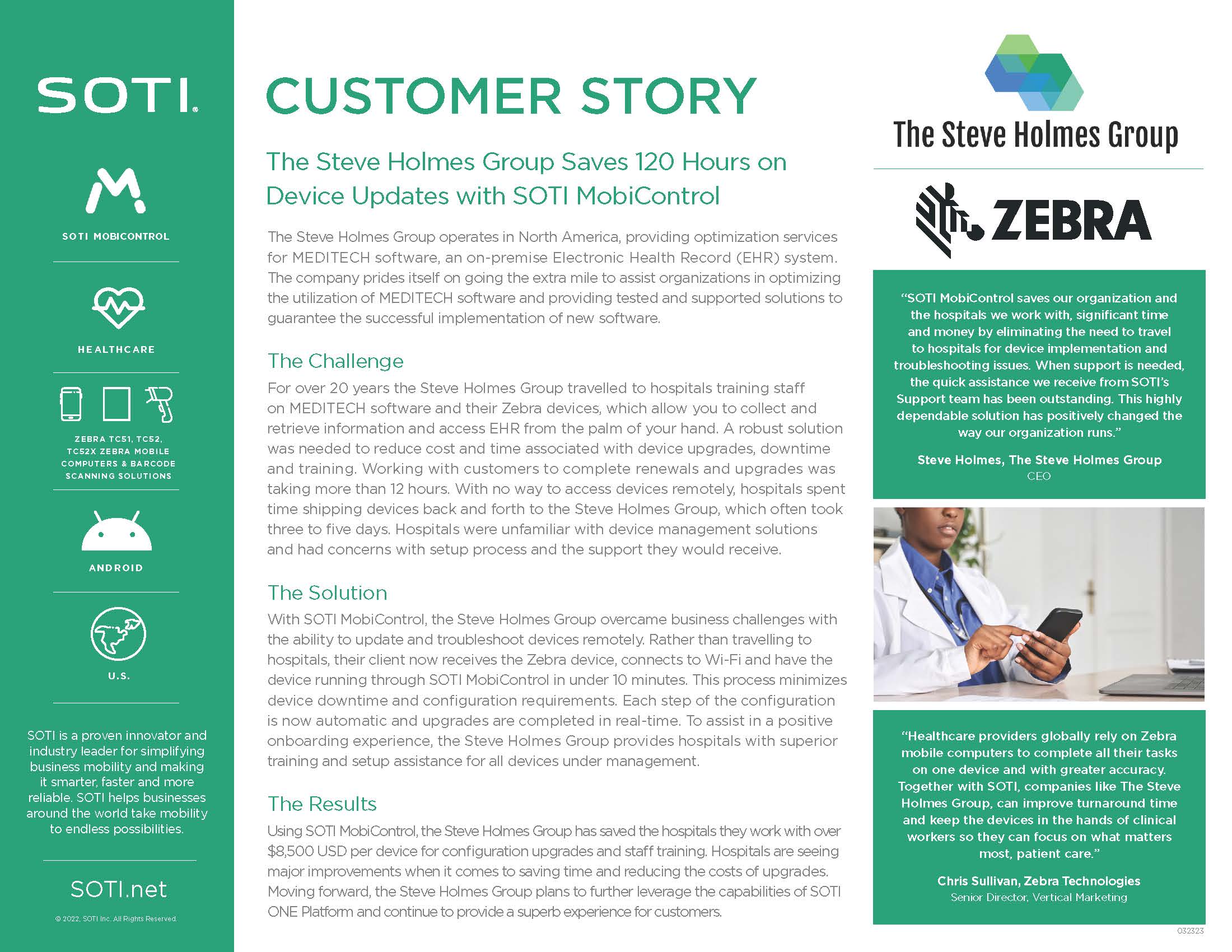
The healthcare industry is perpetually being transformed by technology. Organizations rely on a variety of devices to provide care for patients and maintain high standards of health, safety and privacy. Recently, the healthcare industry has been using mobile devices and protected health-information-compliant apps to enable care providers to complete patient records digitally and manage medication distribution. The use of this technology has improved patient experiences and real-time information exchanges.
Patient Experience
Did You Know1:
- 64% of healthcare settings have started to explore synchronous Internet of Things (IoT)/telehealth medical devices since the start of the COVID-19 pandemic. These include devices that can automatically capture health metrics such as heart rate and blood pressure from patients who are not physically present in a healthcare facility.
- A current frustration around new IoT/telehealth medical devices is the regular downtime that occurs, resulting in delays to patient care for 53% of healthcare organizations.
- On average, technical or system difficulties from devices lead to each employee losing around 3.5 hours of downtime per week.
- The specific concerns listed by IT professionals highlight why more safe and secure technologies are a must moving forward. These include:
-
- Patient records being stolen in a cyberattack or hacking (39%)
-
- Patient information being lost (36%)
Using technology, such as mobile devices, makes it easier to interact with patients. Now, healthcare professionals can use mobile devices to talk to patients via video calls and access their records outside the hospital when visiting them at home. This enables patients who can’t leave their homes or wait in hospital waiting rooms to receive the care they need. Both these communication methods depend heavily on devices, so it’s important that device downtime is minimized. Travelling with patient records also poses security risks as patient information is confidential. Healthcare companies need to ensure device users and IT teams have efficient ways to communicate and troubleshoot device issues when they arise.
Real-Time Information Exchange
Did You Know1:
- 52% of hospitals have digital recordkeeping.
- 94% of IT decision-makers agree digital patient recordkeeping will either save time, improve recording or enhance data sharing.
- 76% of decision-makers believe digital recordkeeping improves data security or reduces the likelihood of a breach.
Within a healthcare organization there are many groups that need access to information, such as physicians, pharmacists, patients and payers. Rather than recording patient information through paper-based processes and heightening the risk of privacy breaches or record loss, the industry has incorporated protected health-information-compliant technology into various processes so these groups have access to secure and accurate information at all times.
The healthcare industry has found many ways to enhance the patient experience, but with more mobile devices and apps, there is increased management complexity, including remote support and security. When these devices are not functioning optimally, the resulting inefficiencies can lead to significant impacts on the healthcare industry.
SOTI and Healthcare
For many years, SOTI has helped healthcare organizations from all over the world manage mission-critical technology, including The Steve Holmes Group.
The Steve Holmes Group operates in North America and provides optimization services for an on-premise Electronic Health Record system: MEDITECH software. The company goes the extra mile to assist organizations in optimizing the utilization of MEDITECH software and provides supported solutions to guarantee the successful implementation of the new software. SOTI MobiControl helped The Steve Holmes group overcome business challenges with the ability to update and troubleshoot devices remotely.
Instead of travelling to all the hospitals it works with, a time-consuming and expensive process, The Steve Holmes Group can use SOTI MobiControl to remotely configure devices across North America and have them running in under 10 minutes. With this new process, it can minimize device downtime, configuration requirements and save hospitals money.
“SOTI MobiControl saves our organization, and the hospitals we work with, significant time and money by eliminating the need to travel to hospitals for device implementation and troubleshooting issues,” said Steve Holmes, CEO of The Steve Holmes Group. “When support is needed, the quick assistance we receive from SOTI’s Support team has been outstanding. This highly dependable solution has positively changed the way our organization runs.”
Read the full story below:
Want to Learn More?
Stay tuned for SOTI’s latest report, The Technology Lifeline: Charting Digital Progress in Healthcare, launching June 27 and continuing SOTI’s annual review of the global healthcare space to assess the industry’s digital maturity and determine where IT budgets are being targeted.
For more information on mobility and the healthcare industry:
- Check out SOTI’s 2022 Healthcare Report: A Critical Investment: Taking the Pulse of Technology in Healthcare
- Check out more customer stories from the healthcare industry
1A Critical Investment: Taking the Pulse of Technology in Healthcare




